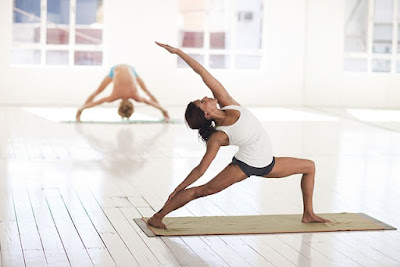Increasing flexibility in the body can be achieved by doing various stretching and mobility exercises. Here are some tips for improving flexibility:
Warm up before stretching:
Before stretching, it is important to warm up the muscles and get the blood flowing. This can be done by light cardio or dynamic stretching.
Hold stretches for at least 30 seconds:
Holding stretches for at least 30 seconds can help to gradually increase flexibility. It's important not to bounce or force a stretch.
Stretch regularly:
By incorporating stretching into your exercise routine, you can improve flexibility and reduce the risk of injury. Regular stretching also helps to maintain and increase flexibility gains over time. Stretching should be incorporated into your daily routine for best results. Try stretching after a workout or before bed. Stretching is important for flexibility because:
- Increases range of motion and improves posture.
- Reduces risk of injury by improving joint stability.
- Improves circulation and oxygenation to muscles.
- Relieves muscle tightness and tension.
- Enhances athletic performance by improving power and agility.
- Promotes relaxation and stress relief.
- Improves overall physical function and mobility in daily activities.
Incorporate yoga or Pilates:
- Warm up with light stretching or cardio exercises.
- Start with basic yoga poses that focus on stretching and hold each pose for 20-30 seconds.
- Incorporate dynamic or flowing sequences to further increase flexibility.
- Practice regularly, at least 3-4 times a week.
- Gradually progress to more advanced poses.
- Pay attention to proper form and listen to your body to avoid injury.
- Stretch after practice to cool down and maintain flexibility gains.
Target multiple areas:
Focus on stretching all the major muscle groups including the legs, back, hips, arms and neck. To target multiple areas for flexibility, consider the following tips:
- Incorporate a variety of yoga poses that target different muscle groups.
- Focus on both upper and lower body, as well as spine and hips.
- Use props such as blocks, straps, or blankets to assist in stretching.
- Incorporate dynamic movements, such as sun salutations, to improve overall flexibility.
- Include balance poses to improve posture and flexibility in the ankles, knees, and hips.
- Practice regularly, at least 3-4 times a week, to see progress in flexibility.
- Listen to your body and respect its limits, avoiding pushing too hard or risking injury.
Gradually increase intensity:
Avoid pushing yourself too hard too fast. Gradually increase the intensity of your stretches over time to avoid injury.
Use foam rollers:
Using foam rollers to massage tight muscles can help to improve flexibility and increase range of motion.
Staying hydrated can help to reduce muscle stiffness and increase flexibility. Staying hydrated helps flexibility in the following ways:
Stay hydrated:
Staying hydrated can help to reduce muscle stiffness and increase flexibility. Staying hydrated helps flexibility in the following ways:
- Maintains joint lubrication: Joints require adequate hydration to function smoothly and reduce the risk of injury.
- Supports muscle function: Muscles require water to contract and relax properly.
- Reduces muscle soreness: Proper hydration helps flush out waste products from muscles that can cause soreness.
- Regulates body temperature: Sweating during physical activity can lead to dehydration, affecting the body's ability to regulate temperature and perform at optimal levels.
- Increases blood volume: Hydration helps increase blood volume, improving circulation and oxygenation to muscles.
It is recommended to drink at least 8 glasses of water per day and to increase fluid intake before, during, and after physical activity to help maintain hydration and support flexibility.
Listen to your body:
If a stretch causes pain, ease up or stop. Pain is your body's way of telling you that you're doing something wrong.
Incorporating these tips into your daily routine can help to gradually increase flexibility and improve overall movement and mobility. Remember to be patient and consistent, and always listen to your body.
Incorporating these tips into your daily routine can help to gradually increase flexibility and improve overall movement and mobility. Remember to be patient and consistent, and always listen to your body.
